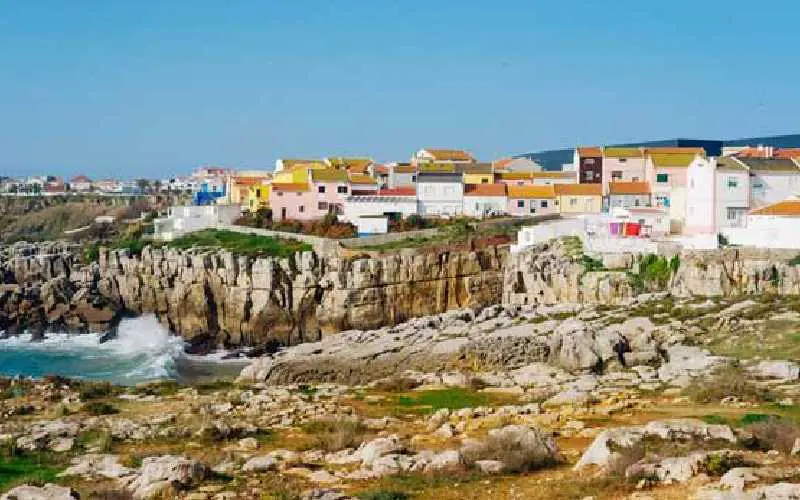On the west coast of Portugal, about an hour south of Lisbon, is Peniche. The island or peninsular of Peniche juts out into the Atlantic. Its geographical importance made it a target for invaders in the 16th century.
Introduction to Peniche
The city, built on a rocky peninsula, is considered by geologists as a unique example of the Toark fluctuation of the early Jurassic extinction worldwide. In the central region of Portugal, this seaside resort with many feathers on its cap. The best of the many beautiful beaches, Praia dos Supertubos, with tubular waves, is suitable for major international events.
The town and port of Peniche are located on a peninsula 24 miles south of Nazare and north of Cascais, Portugal. Peniche has been a port since early modern times, when a fortress was built to defend the city. The fortress went down in the history of maritime defence and was a prison under the Estado Novo regime in the 20th century.
In the 16th century the island and town of Port of Peniche were connected to the mainland by a sand pit. Peniche is now known for its first-class beaches and waves that attract thousands of traveling surfers every year. The city maintains its long-standing status as one of the largest fishing ports in Portugal and hosts a significant proportion of sardines, Atlantic tubers, mackerel (Mockerel), cuttlefish and a number of other species such as gilthead bream, sea bass and cuttlefish that land on the Portuguese coast and are enjoyed by many seafood restaurants and marinas.
Climate
The climate of Peniche is mild and rainy in winter and cool and sunny in summer. Peniche is located on the coast of Portugal, northwest of Lisbon, on a small peninsula and is therefore exposed to the sea and winds, with mild winters and cool, windy summers. January and February are the coldest months, with highs of 57F and overnight lows of 50F. Summer temperatures range from 70F to 63F. Peniche receives about 2.5 inches of rainfall annually, compared to the much wetter Porto in the north, with 50 inches. The climate is cooler than in the inland Alentejo region and warmer than in the southern Algarve region.
The peninsular exhibits slight temperature fluctuations during the day and slight seasonal temperature fluctuations, making it mild throughout the year. Peniches climate is similar to that of San Francisco, California, with warmer nights due to the effects of the Portuguese currents. Peniche is a fishing port, but the fish and seafood are not as fresh now due to the industrialisation of the fishing process.
Beaches of Peniche
The beaches of the peninsula and the esteemed surfing community made the most recent list of Portugal’s seven natural wonders. You can also make time for a trip to the Berlingas Islands, home to a popular nature reserve off the coast.
Supertubos, one of the most beautiful beaches in Europe for tubular waves (seasonal and weather permitting), stretches for 3km from the port of Peniche to the quiet village of Consolaassapso and is a popular area for surf schools and surf lodges. The sea in front of Peniche is mighty, so if you’re on holiday with children, consider the sheltered lagoon beach of Foz do Arelho, 17 km north. An alternative destination is the unique protected bay of Sapso do Martinho in Porto, 25 km south of Peniche.
In the Peniche region there are numerous beaches that are oriented in different directions, which means that there is always at least one beach with a proper swell that is suitable for your abilities. In the north of the peninsula, Praia de Baleal is a favorite of experienced surfers, and the village of Baleal has long been a popular surf spot. South of Peniche is the Praia do Medapso, often referred to as the Supertubos beach, where, in the right weather conditions, magnificent tubular waves of up to 3 m in height form.
History of Peniche
Peniche was such a formidable challenge to enemy armies that it was fortified with walls and ditches surrounding the peninsula, much of which is still preserved today. The impressive 16th century castle that guards the narrow entrance to the peninsula is worth a visit. Peniche has a bus station that offers excursions to most nearby cities as well as fast buses to Lisbon and other cities.
In the 1800s, Peniche boasted over 1,000 skilled craftsmen who created some of their finest masterpieces. Today there are fewer, but you can still see men and women working in Peniche every summer when the International Lace Exhibition takes place.
If you enjoyed this article you might also like to read about:



1 thought on “Peniche Portugal”